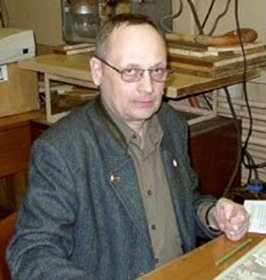

International Journal of Innovative Research in Computer Science and Technology
Year: 2021, Volume: 9, Issue: 2
First page : ( 51) Last page : ( 71)
Online ISSN : 2350-0557.
 Michael M. Silaev
Michael M. Silaev
![]() DOI: 10.21276/ijircst.2021.9.2.9 |
DOI: 10.21276/ijircst.2021.9.2.9 | ![]() DOI URL: https://doi.org/10.21276/ijircst.2021.9.2.9
Crossref
DOI URL: https://doi.org/10.21276/ijircst.2021.9.2.9
Crossref
 This is an Open Access article distributed under the terms of the Creative Commons Attribution License (CC BY 4.0) (http://creativecommons.org/licenses/by/4.0)
This is an Open Access article distributed under the terms of the Creative Commons Attribution License (CC BY 4.0) (http://creativecommons.org/licenses/by/4.0)
Article Tools: Print the Abstract | Indexing metadata | How to cite item | Email this article | Post a Comment
Michael M. Silaev
The kinetics of free-radical nonbranched-chain processes of addition to unsaturated compounds (such as alkenes, formaldehyde, dioxygen) was investigated. The aim of this study was the conclusion of simple kinetic equations to describe ab initio initiated nonbranched-chain processes of the saturated free-radical addition to the double bonds of unsaturated molecules in the binary reaction systems of saturated and unsaturated components. In the processes of this kind the formation rate of the molecular addition products (1:1 adducts) as a function of concentration of the unsaturated component has a maximum. It is shown that a maximum in these curves arises from the competition between saturated and unsaturated components for reacting with the emerging 1:1 adduct radical. Five reaction schemes are suggested for this addition processes. The proposed schemes include the reaction competing with chain propagation reactions through a reactive free radical. The chain evolution stage in these schemes involves three or four types of free radicals. One of them – СÐ2=С(СÐ3)ÄŠÐ2, СÐ2=СÐÄŠÐОÐ, ÐÄŠ=O, o-СÐ3С6Ð4СÐ2O4•, or HO4• – is relatively low-reactive and inhibits the chain process by shortening of the kinetic chain length. Based on the suggested schemes, nine rate equations (containing one to three parameters to be determined directly) are deduced using quasi-steady-state treatment. These equations provide good fits for the nonmonotonic (peaking) dependences of the formation rates of the molecular products (1:1 adducts) on the concentration of the unsaturated component in binary systems consisting of a saturated component (hydrocarbon, alcohol, etc.) and an unsaturated component (alkene, allyl alcohol, formaldehyde, or dioxygen). The unsaturated compound in these systems is both a reactant and an autoinhibitor generating low-reactive free radicals. A similar kinetic description is applicable to the nonbranched-chain process of the free-radical hydrogen oxidation, in which the oxygen with the increase of its concentration begins to act as an oxidation autoingibitor (or an antioxidant). The energetics of the key radical-molecule reactions is considereding.
 ,
,  , and
, and  : Ab Initio Quantum Chemical Calculations”, Izvestiya Akademii Nauk, Ser.: Khimiya, No. 3, 2009, pp. 479–482, English Translation in: Russian Chemical Bulletin, International Edition, Vol. 58, No. 3, 2009, pp. 489–492.
: Ab Initio Quantum Chemical Calculations”, Izvestiya Akademii Nauk, Ser.: Khimiya, No. 3, 2009, pp. 479–482, English Translation in: Russian Chemical Bulletin, International Edition, Vol. 58, No. 3, 2009, pp. 489–492.Chemistry Faculty, Lomonosov Moscow State University, Vorobievy Gory, Moscow 119991, Russia (mmsilaev@rc.chem.msu.ru)
No. of Downloads: 57 | No. of Views: 1664
Michael M. Silaev.
January 2022 - Vol 10, Issue 1
Sunita Bishnoi.
January 2021 - Vol 9, Issue 1
Sunita Bishnoi.
January 2021 - Vol 9, Issue 1
